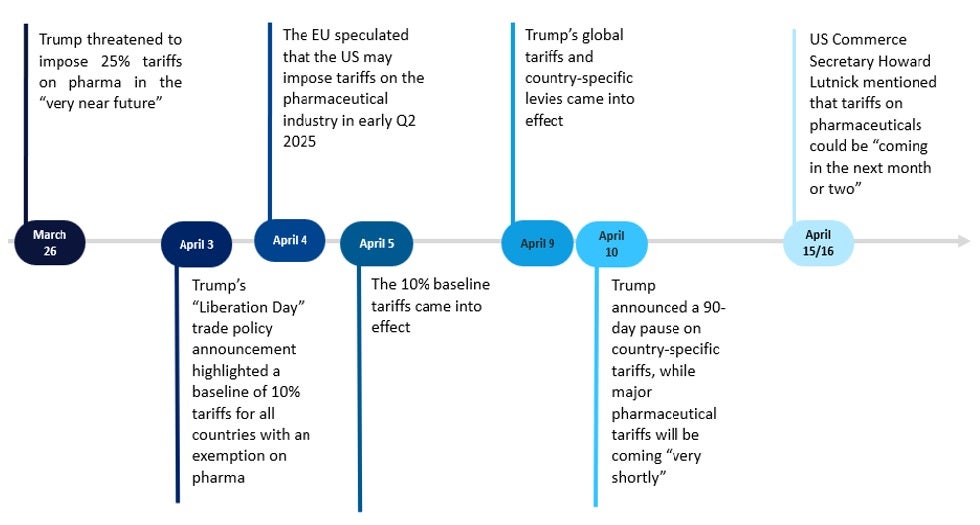In early 2025, US President Donald Trump mentioned the possibility of potential tariffs on foreign-made pharmaceuticals. This threat was raised again in March 2025, highlighting Trump’s determination to improve US drug production and manufacturing. The introduction of tariffs on the pharmaceutical industry may lead to an increase in the costs associated with drug development while also making these drugs more expensive for consumers, says GlobalData, a leading data and analytics company.
The situation began to escalate after Trump’s ‘Liberation Day’ trade policy announcement on 5 April 2025, as a baseline of 10% tariffs was announced on all international goods, excluding pharma temporarily. By 9 April 2025, these tariffs were active but faced a 90-day pause the following day. The figure above shows the timeline of tariffs for the pharma industry.
While the tariffs placed significant pressure on a wide range of industries, the temporary exemption for pharmaceuticals left drug manufacturers in a state of uncertainty. This exemption has created a climate of anticipation, forcing pharma companies to prepare different contingency plans to mitigate the impact of future tariffs. The EU has voiced concerns over the implementation of these tariffs, advising companies within the pharmaceutical industry to brace for impact after the US Department of Commerce commented that pharmaceutical tariffs could be enforced in the next month or two. This pivotal moment could reshape consumer access to medicine worldwide. The current uncertainty in pharmaceutical tariffs could drive up drug prices while limiting their availability, significantly impacting patients who depend on timely and affordable access to life-saving treatments.




